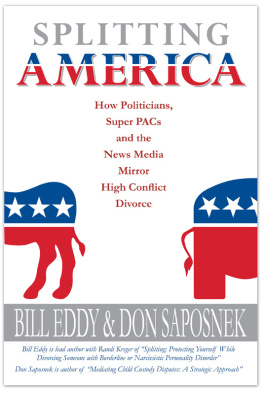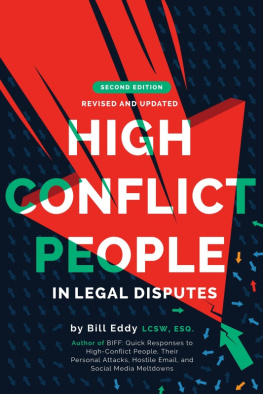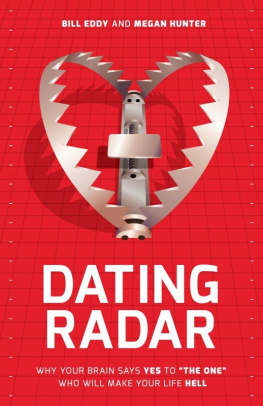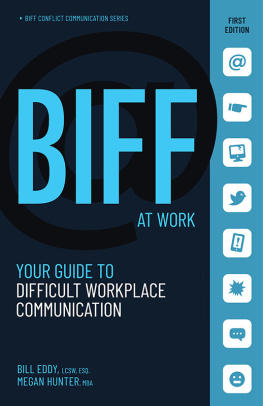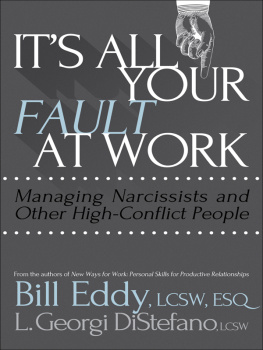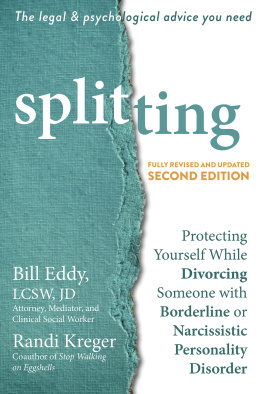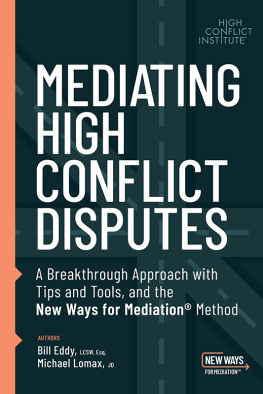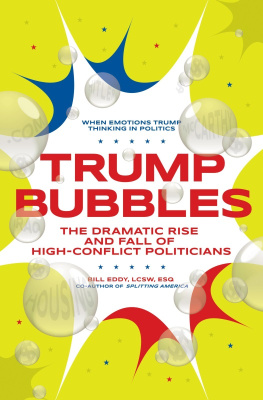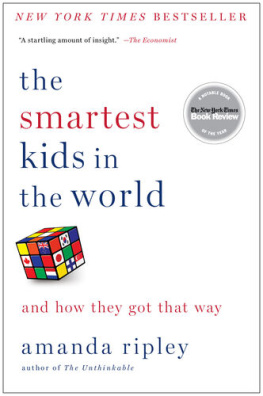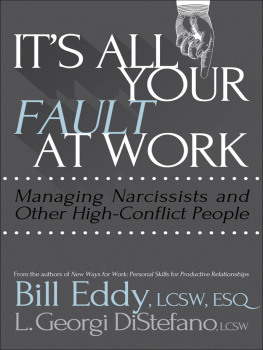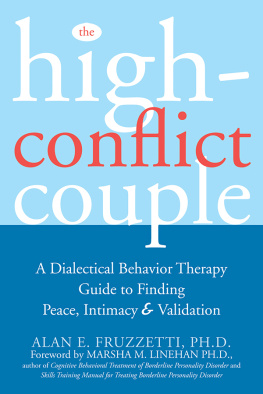Bill Eddy - Splitting America: How Politicians, Super PACs and the News Media Mirror High Conflict Divorce
Here you can read online Bill Eddy - Splitting America: How Politicians, Super PACs and the News Media Mirror High Conflict Divorce full text of the book (entire story) in english for free. Download pdf and epub, get meaning, cover and reviews about this ebook. year: 2012, publisher: BookBaby, genre: Politics. Description of the work, (preface) as well as reviews are available. Best literature library LitArk.com created for fans of good reading and offers a wide selection of genres:
Romance novel
Science fiction
Adventure
Detective
Science
History
Home and family
Prose
Art
Politics
Computer
Non-fiction
Religion
Business
Children
Humor
Choose a favorite category and find really read worthwhile books. Enjoy immersion in the world of imagination, feel the emotions of the characters or learn something new for yourself, make an fascinating discovery.
- Book:Splitting America: How Politicians, Super PACs and the News Media Mirror High Conflict Divorce
- Author:
- Publisher:BookBaby
- Genre:
- Year:2012
- Rating:5 / 5
- Favourites:Add to favourites
- Your mark:
Splitting America: How Politicians, Super PACs and the News Media Mirror High Conflict Divorce: summary, description and annotation
We offer to read an annotation, description, summary or preface (depends on what the author of the book "Splitting America: How Politicians, Super PACs and the News Media Mirror High Conflict Divorce" wrote himself). If you haven't found the necessary information about the book — write in the comments, we will try to find it.
Something nasty is happening in America. Have you noticed the trend? Theres more bullying, more incivility, more disrespect and even more relationship violence between us at home, at work, in our communities and in the news. And, it seems to be increasing rather than decreasing.
We have noticed a pattern to this behavior that is all too familiar: Personal Attacks, Crisis Emotions, All-or-Nothing Solutions, Narcissistic Behavior and Negative Advocates. We are well-acquainted with this pattern in high-conflict divorces from working with divorcing families over the past 30 years, and its not good. This behavior is called high-conflict because it increases the conflict, rather than reducing or resolving it. Worst of all, its contagious it spreads when people are exposed to it, like a virus.
Recently, political leaders in both parties appear to be adopting and escalating high-conflict behavior, and perhaps, even leading it. Millionaires and billionaires are funding expensive ads as key elements in high-conflict election campaigns. And, the news media promote high-conflict behavior in every broadcast to children as well as to adults by relentlessly showing, and thereby teaching, the most dramatic bad behavior of the day.
We have seen this high-conflict behavior split too many families going through divorce, and we dont want to see it destroy the American family. We want to avoid a Democrat-Republican high-conflict divorce.
This book focuses on the patterns of high-conflict behavior we are seeing today in todays politicians. Theres even a scorecard for comparing candidates by looking at their patterns of behavior. This book is our small effort to calm this national conflict for the good of the American family.
Bill Eddy: author's other books
Who wrote Splitting America: How Politicians, Super PACs and the News Media Mirror High Conflict Divorce? Find out the surname, the name of the author of the book and a list of all author's works by series.

